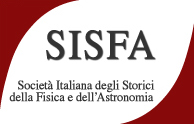Speaker
Description
Mercury and Venus are the closest planets to the Sun and the Earth. In the geocentric model, they were situated near the Earth: above the Moon and below the Sun; for this reason, they were called “inferior” planets according to the Ptolemaic system. Following the Platonic system, those planets were located above the Moon and the Sun and below Mars. In the so-called “Egyptian” system, derived from Marcianus Capella's astronomy, Mercury and Venus run around the Sun, while the Sun rotated around the Earth as the Moon and the other planets. In the Renaissance and the Modern Age, the question of the order of inferior planets took a new form after the novelty introduced by the Copernican theory. There was a revival of geocentrically oriented astronomical instruments, especially the so-called orbarium, a model of planetary orbs concerned explicitly with the individual celestial bodies. The Italian instrument maker Girolamo della Volpaia made a few orb-models to represent the three-dimensional motions of the planets, including two of the orbs of Mercury. In this talk this Mercury-orb model will be compared to Georg von Peuerbach’s Theoricae novae planetarum (1474). Della Volpaia theorica was a particular combination of an eccentric three-orb-system which is part of a concentric five-orb system. The planet Mercury, also so important for astrological influences, was particularly interesting for fixing or overcoming old world models.

